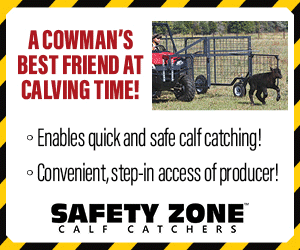by Corinne J. Brown / Photos by Tanna White
Classy cowgirls from the WRAA ramp up the competition
Not every woman dreams of getting away from it all by driving hundreds of miles in a horse trailer to rope calves with three of her best friends. But not every woman can. Female ranch rodeo contestants have something extra that makes them want to compete and win at being top-notch cowgirls. After all, who do you know that sits down late at night to fill out her team’s entry forms and map a road trip to the Finals, long after the stock’s been fed, the laundry’s folded, and the last bedtime story has lulled a little one to sleep? If this gal is in your house, she may be a member of the Women’s Ranch Rodeo Association, and darn proud of it.
Founded officially as an organization in Kansas back in 2005, the WRRA has made ranch rodeo history. What might have started as a dare or a dream is a now a successful, proven reality with 150 team members and 25 individuals, reminding the rest of us that cowgirls have always been able to handle ranching challenges just as well as men.
“We appreciate what ranch rodeo represents,” explains Billie Franks, one of the founding members. “It’s our life. We’re doing what we love. I know I can speak for all my team members, including Jenna Adams from Schilder, Oklahoma; Neesa Smith from Hydro, Oklahoma, and Kelsey Mosby from Rising Star, Texas.”
That love has spread like wildfire across the western states and the Midwest. WRRA members now hail from as far north as Montana, South Dakota, and Wyoming and south to Oklahoma and Texas. A total of 18 teams with evocative names like “Too Hard to Handle”, “Cowgirl Swank”, and “4 Branded Chicks” (to name a few) competed in their recent 10th Annual WRRA World Finals, held for the first time this past fall, October 17-18 at the Larimer County Fairgrounds and Event Center in Loveland, Colorado. A Calcutta, three full rounds, and a Saturday morning stray gathering gave viewers more than their money’s worth. Billie Frank’s seasoned team proudly won the Finals for the second year in a row!
Holding the competition in a venue farther west gave some contestants and audience members a more geographically central location.and audience members a more geographically central location. “The move got us a few new sponsors,” says Frank, “in addition to an almost soldout arena— over 200 ticket holders. Special thanks goes to the Colorado State University’s rodeo team as well, who were the set-up and ground crew.
“Our sponsors are like family,” adds Franks. “We couldn’t exist without them.” A very special debt is owed to nutritional consultant Dr. Harry Anderson, a former Kansas resident, for his longtime encouragement and support.
“The move got us a few new sponsors,” says Frank, “in addition to an almost sold out arena— over 200 ticket holders. Special thanks goes to the Colorado State University’s rodeo team as well, who were the set-up and ground crew. “Our sponsors are like family,” adds Franks. “We couldn’t exist without them.” A very special debt is owed to nutritional consultant Dr. Harry Anderson, a former Kansas resident, for his longtime encouragement and support.
“I’ve known Billie Franks ever since the beginning of the organization,” Anderson recalls. “I went to watch a women’s ranch rodeo in Oklahoma years ago and was completely enamored with what I saw there— women tackling the same events as cowboys. I couldn’t believe how good they were. More than fun to watch, the event was truly impressive. I know this much— I wouldn’t want to arm wrestle with any of them!”
If you’re not familiar with the WRRA, memberships are open with no minimum age limit. The oldest competitor at present is 51. Not every member is a ranch gal; some are weekend cowgirls with great skills who appreciate cowboy
life all the more. Each state’s members vote for a state representative and an elected board of eight women rule for a
one-year term. Meetings are held monthly via conference call.
As far as rodeos go, the rules are easy: gals do everything regular ranch rodeo cowboys do except ride broncs and milk wild cows. Otherwise, the teams compete at sorting, doctoring, mugging and trailer loading. And a big plus— entry fees for most rodeos has 100% payback for winners.
When asked what size steers the gals are roping, and how, Franks explains, “We work with whatever’s
available. In the stray gathering/mugging event, (everyone’s favorite) our girls can either head ‘em or heel ‘em;
no accounting for style. Even though women are less muscular on top than men, even our lighter gals have a way of getting those steers down. In fact we often wonder why cowboys don’t try it our way.” (With all due respect,
this particular technique remains like the secret ingredient in a family recipe; unrevealed. You have to come see it for yourself.)
“Each team has to know its strengths,” she continues. “Some teams have real stout girls for example;
some don’t. We still get the job done.” Many teams seem to strategize more, one possible advantage, and
some just use female intuition.
If anything has been common to the association’s growth, it’s the many roles a woman has to fill. The teams add and lose competitors based on who is pregnant that year. Nonetheless, all the members are committed, whether they’re competing or not. Working around recitals, soccer practice, even home schooling—they make time for their passion.
If they have to head out, they know they can leave the table set, with supper simmering on the stove.
Some WR readers might also have seen WRRA members competing at the Western States Ranch Rodeo finals in Winnemucca, Nevada, another opportunity held even farther west for these amazing cowgirls to show what they’re made of. But no matter where they ride, they stick together, passing the ranch rodeo torch on to willing daughters and sisters who love the sport as much they do.





